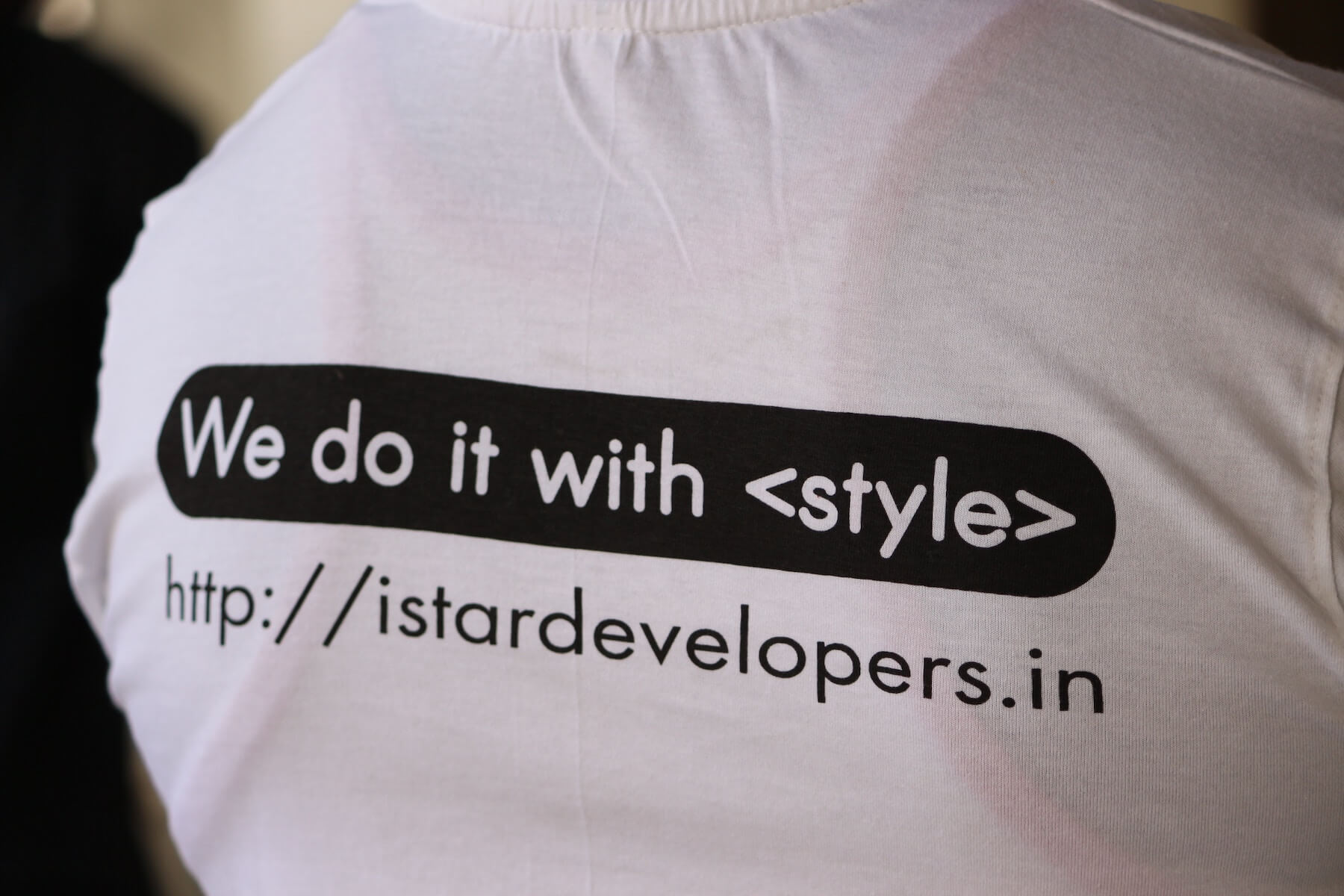What are the Pros of Drupal?
So, we all know Drupal is powerful. It's secure. It's great at managing complex projects. We hear this all the time!
But what really makes Drupal so great?
Let's dive straight in with a list of Drupal's top pros, and explore whether the CMS is really any better than its alternatives and counterparts.
Here is an in-depth review and explanation of the strongest points of Drupal, based on my personal and professional experience working with content management systems for over fifteen years:
PRO #1: Security of Drupal CMS
Is Drupal really as secure as they say?
One of Drupal’s strongest selling points, ever since its inception in 2000, is its security.
As a content management system, Drupal provides security that is second to none.
The CMS is not only touted as the most powerful of its kind, but also the most secure. In the two decades of its existence, the Drupal CMS has faced only two major security vulnerabilities.
Colloquially known as Drupalgeddon and Drupalgeddon 2, these zero-day vulnerabilities affected hundreds of thousands of Drupal sites across the globe, taking down the websites of even enterprise-level Drupal users.
 While these vulnerabilities were indeed of a significant nature, and can’t be dismissed—the Drupal project can proudly say that it’s faced a significantly lower occurrence of mission-critical security vulnerabilities.
While these vulnerabilities were indeed of a significant nature, and can’t be dismissed—the Drupal project can proudly say that it’s faced a significantly lower occurrence of mission-critical security vulnerabilities.
Recent Drupal threats have been well mitigated, and as an agency specializing in Drupal, we forecast that the CMS will face an even further-reduced threat of potential security vulnerabilities in the future. This, in part, is due to Drupal’s new reliance on the powerful Symfony framework, since version 8 was released back in 2015.
Since the current Drupal version at any one time utilizes a slightly older version of Symfony than is currently available, Drupal allows itself additional time, beyond Symfony’s regular update schedule, for that particular version of the framework to mature.
Security-wise, this is not only a smart move by the Drupal project, but also highly beneficial to the integrity of the Symfony-based code now shipped with Drupal.
In case you’re a little confused, think of it like this:
Using the latest version of a software like Microsoft Windows can inherently carry new security risks, because they haven’t yet been discovered.
In using a version slightly older — one that hasn’t yet been deprecated, and is still supported — you’re benefiting from the additional security factor that this version of the software has already been ‘used in the wild’, and most obvious security vulnerabilities exposed during this time have been previously resolved.
Drupal’s integration with the Symfony framework functions in much the same way.
The Drupal project has a dedicated security team, whose goal is to identify and rectify potential security holes or existing vulnerabilities with the CMS.
Impressively, the Drupal Security Team also retain vigilance on behalf of Drupal’s library of open-source modules that are contributed by the community.
Drupal also make it fairly easy to identify which modules are supported by Drupal’s Security Advisory Policy, and which are not.
For that reason, it’s best to stick to modules which receive security coverage.
PRO #2: Drupal's Flexibility
Is Drupal really as flexible as advertised?
The flexibility of Drupal is definitely one of its greatest selling points.
After all, the CMS is used by some of the world’s most prevalent organizations: and from my own analysis, it’s best target clients today are businesses and enterprise-level users.
Many of the world’s biggest corporations utilize Drupal as the content management system of choice, including the likes of:
- Fox
- Johnson & Johnson
- Verizon
- Cisco
- Government of Australia
- General Electric
- BBC
- Ebay
- Puma
- LUSH
- Redhat
- London Gatwick Airport
- The Economist
- Pfizer
- Grammy
- Honda
- Bruno Mars
- Oxfam
- World Economic Forum
- London Government
- Lady Gaga
- Al Jazerra
Having worked with Drupal for over fifteen years, I’m willing to bet money on one common factor that all of these organizations have: a need for flexibility within their content management system.
 And having tried and tested just about every website building tool and content management system out there—I can say with confidence and conviction: Drupal is the single most powerful CMS currently available.
And having tried and tested just about every website building tool and content management system out there—I can say with confidence and conviction: Drupal is the single most powerful CMS currently available.
In fact, Drupal has held the top-spot in terms of flexibility for years (two decades, even). It’s easy to see that this is the case.
Just take a look at these popular articles, and how the authors unanimously agree on Drupal’s power and flexibility as a CMS:
- http://www.rafichowdhury.com/drupal-box-powerful-cms/
- https://www.vardot.com/en/blog/why-drupal-best-cms-your-website
- https://www.computerworld.com/article/2494786/choosing-an-open-source-cms--part-1--why-we-use-drupal.html
If that doesn’t say flexibility, I don’t know what does.
I’ve held numerous positions working with Drupal over the years, both as a website-centric CMS, and a decoupled/headless solution.
I’ve done:
- Drupal Theming
- Drupal Site Building & Content Management
- Drupal Front-end Development
- Drupal Back-end Development
- Drupal Architecture
- Drupal Maintenance, Monitoring & DevOps
- Drupal Consultancy
And I can say from experience, as a highly powerful framework Drupal can do nearly anything.
In fact, the CMS is so powerful that it can fulfill the needs of nearly any complex website or app.
Of course, there are often tweaks to the framework’s native behavior that have to be made in order to accomplish certain tasks most efficiently, but from the ground up, the CMS is built for flexibility.
In fact, I’ll cover this point further (in a bit), when I get to content management, blocks, views, taxonomy, and modules(keep reading for my view on these features!).
PRO #3: Drupal is Really Powerful
Is Drupal really more powerful than other content management systems?
This point excites me. The power of Drupal. It’s unrivaled. And it’s exciting.
Having worked with so many content management systems (and frameworks) in my time, as far as I’m concerned, Drupal takes the cake here.
The CMS has so much to give in terms of power and flexibility, and is so stealthy that it’s scared me at times. And I’m serious.
 Out of the box, Drupal’s performance is stellar. Whatsmore, it is seemingly only improving with time. I remember the very first time I tested out a beta version of Drupal 8.
Out of the box, Drupal’s performance is stellar. Whatsmore, it is seemingly only improving with time. I remember the very first time I tested out a beta version of Drupal 8.
And boy, was I impressed. The server I used was in fairly poor shape, but the CMS behaved in a way that truly stunned me.
And that’s the beauty of Drupal, and why I fell so in love with it — from day one.
Since Drupal is able to do so much given its flexibility, it’s easy to create any kind of website — intended for any kind of industry vertical, with even the most complex of requirements and specifications.
And because the CMS ships with so many core modules pre-configured and installed, I’m now able to take a Drupal site from conception to delivery in no time.
Particularly after the release of Drupal 8, things became significantly easier. Drupal now allows for inline, on-page editing — and take it from a former WordPress fanatic (I admit...) WordPress and Visual Composer is nothing in comparison.
Since the CMS allows overrides to the core functionality directly at a theming level, you don’t even need to develop a custom module in many cases.
How easy is that?
You can literally stick all your basic modifications to Drupal’s functionality directly within your site’s theme, without writing a line code for a new module.
And since the integration of the Symfony framework in Drupal 8, back-end development has become even easier. Say your goodbyes to ugly, standard-old-PHP.
PRO #4: Scalability & Performance with Drupal
Is Drupal superior at performance and scalability?
Drupal is known for its great ability to scale.
In fact, that’s one of the reasons that so many enterprise-level clients choose Drupal. The CMS actually ships with tools and functionality to manage scalability, with a forward-thinking code structure and modules specifically devoted to future scalability.
And since so much of what you create in Drupal is reusable (taxonomy or entity references, for example), it’s super easy to scale as your business begins to expand.
Although Drupal has built-in mechanisms for handling the scalability of your site or app, there are numerous ways to further enhance performance beyond the scope of the native features in the CMS.
Some of the best ways to improve performance and scalability in Drupal are:
- The use of a content delivery network
- Fine tuned server scaling (both vertically and horizontally, or even multi-server)
- Utilization of contributed modules for performance and high-traffic scaling
In fact, Drupal provides a great guide here: https://www.drupal.org/docs/8/managing-site-performance-and-scalability
PRO #5: Content Management in Drupal
Is it easier to manage content in Drupal CMS?
 Ah, I love this part.
Ah, I love this part.
I’m excited.
Drupal and content management, of course, go hand in hand. Drupal is so powerful at managing content, it’s nearly ridiculous.
It shouldn’t be so surprising, as it’s a content management system, but I think the real issue here is just how surprisingly bad Drupal’s counterparts are at managing content.
Not only does Drupal allow you to store your content in a variety of ways (called nodes, blocks, taxonomy - to name a few), it also allows you to store virtually any kind of content you want, exactly how you want.
Drupal allows you to hand-craft specific content types for your website content, and provides numerous mechanisms for doing so.
Of course, you can then configure and, subsequently theme, each content type to display your content exactly as you wish.
In fact, I’m going to drill-down on this a little further, to give you an understanding of exactly how you can manage, configure, theme and style different types of content.
Note that features like this aren’t possible in native WordPress, and in order to integrate custom post types you’ll have to do it at a code-level — ugh!
WordPress (and Joomla) offer NO native administration interface to accomplish this! — What?!
Nodes and Content Types
In Drupal, we refer to nodes as pages. Kind of. Nodes are usually standalone pieces of content, and in many ways, function similarly to a page.
In Joomla you’d call this an Article, and in WordPress you’d call this a Page. But just above a node, you have a content type.
Simply put, content types allow you to create multiple node templates, specific to the node’s needs. You add fields to content types.
So, let’s take a blog post for instance.
You might want the following fields on a content type for blog posts:
- Title for the blog post
- Body for the blog post (the main section)
- Tags on the post
- Category for the post
- A field for a nice image above the post
In this case you’d simply create a content type with these fields, and when creating a new blog post you’d only have these fields available. Which is perfect!
 And now, you can style your blog posts specifically, and can even make the image field appear in a different place on the blog post than on other nodes.
And now, you can style your blog posts specifically, and can even make the image field appear in a different place on the blog post than on other nodes.
To expand on this example, let’s say you have another content type that you’ll need. This one might be specifically for job openings.
As we can all appreciate, a blog post and a job opening are going to require completely separate sets of fields.
So, while you have the above fields for your blog posts, you might want fields like this for your job openings:
- Title of the job (like the position)
- Salary
- The location of the office
- Skills that the candidate requires
- Experience they should have
This way, when creating a new job opening on your site, you’ll have a completely different set of fields than for a blog post, and you can subsequently theme and style them differently.
Each node that you create in Drupal has its very own URL, dedicated specifically to that node.
So in this way, you can use them much as website pages, although they can be used in other ways too (more on that later).
Blocks
In Drupal, blocks can be thought of as modular elements on a page.
In simple terms, they’re what will go in your header, sidebar, and footer. And anywhere else you might want them.
With Drupal 8, you can now create an unlimited number of blocks straight from the Drupal administration interface, assigning them to custom regions or areas of the page.
Of course, you can assign them to multiple pages and specify where you want them to display, and exactly who sees them.
You can assign blocks to as many regions of the page as you like, assigning the same block to different locations depending on the page.
The flexibility with blocks in Drupal 8 is simply great. Whatsmore, Drupal 8 introduced a new feature called block types. Block types allow you to create custom blocks, in exactly the same was as nodes.
You can essentially create templates for multiple block types, and then populate the fields with custom data and information, just as you would a blog post node, for example.
 This takes blocks to an entire new level in Drupal, allowing you to create highly customized content literally anywhere on your site.
This takes blocks to an entire new level in Drupal, allowing you to create highly customized content literally anywhere on your site.
In addition, since Drupal 8 now supports inline editing, you can modify the content of your blocks directly on the page.
Taxonomy
If you’ve ever blogged with WordPress, you’ll be familiar with the term taxonomy.
In Drupal, taxonomies are just like ‘tags’, allowing you to create different methods of tagging content.
But rather uniquely, this isn’t all you can do with them. Taxonomies in Drupal are actually exceptionally powerful.
Here are some of the awesome things you can accomplish using taxonomies in Drupal:
- Create your own taxonomy vocabularies, to house your taxonomy terms. For example, your vocabulary might be ‘Articles’, and your terms might be: ‘News’, ‘Thoughts’ and ‘Guides’. This allows you to keep really good organization of your taxonomy terms, neatly housed within their parent vocabulary.
- Drupal allows you to create nested taxonomy terms, so you can create an order and structure. You can have multiple terms within another term, for example, like this:
- Articles
- News
- Company News
- Worldwide News
- Guides
- Quick Guides
- Long Guides
- Infographic Guides
- Thoughts
- News
- Articles
- You can create custom fields for each vocabulary, similarly to a content type or block type, so that each taxonomy term can include all the information that’s relevant and required.
Views
The views module in Drupal is perhaps one of the CMS’s greatest strengths.
Views allows you to create comprehensive, complex content displays.
With views, you can literally design the way your site sources and displays content, and determine exactly how they should be sorted. And that’s not all.
Views allows you to specify an intricate level of detail, by adding relationships and contextual filters — some of the module’s most useful features.
PRO #6: Drupal Modules
Are Drupal modules any good?
As if Drupal wasn’t powerful enough, the community boasts an impressive number of 42,000(+) modules. More than 42,000 open-source modules, from the official Drupal website alone.
PRO #7: Themes for Drupal
How do Drupal themes compare with WordPress themes?
My experience theming Drupal has always been a pleasant one. And it’s no question why.
With Drupal, updates to the CMS don’t break your themes, as is often an issue in WordPress or Joomla.
PRO #8: Drupal Multisite
How can you run multiple Drupal sites with the same codebase?
One of the lesser-known features of Drupal is called multisite.
This functionality is actually quite unique to Drupal, although some other content management systems sport a fairly similar functionality (the likes of MuraCMS, for example).
What is Drupal Multisite?
The multisite feature in Drupal allows developers to essentially build multiple websites using one single Drupal installation.
That means all websites can share the same single codebase, negating the need for you to monitor, update, and maintain each website separately.
This feature works great in a few different instances.
But multisite is different from multilingual.
 It’s certainly possible to have a multilingual website with Drupal, and in fact I’d say it’s one of Drupal’s biggest strengths, but multisite is actually something slightly different.
It’s certainly possible to have a multilingual website with Drupal, and in fact I’d say it’s one of Drupal’s biggest strengths, but multisite is actually something slightly different.
While you can definitely utilize Drupal’s multisite capability to create multiple versions of the same website in differing languages, it’s not actually the intended use-case.
That’s what the Drupal Internationalization module is for (and it’s a great module, we use it often here at Cocoon).
So what does Drupal Multisite do?
Let’s imagine that you require three websites for your business or organization:
- One for customers (the general public),
- One for other businesses, known as a B2B website, perhaps for outsourcing, partnerships, and official press releases,
- And one which lists the company’s current career opportunities and job openings, where potential candidates can sort through jobs and submit an application.
These are, by all accounts, three very different websites.
It might in fact be a little challenging for a larger organization to manage all of this via one website.
Why?
Because you want a different URL for the careers website, another one for the B2B website, and one for the customer-facing website.
For example, some popular organizations have website URLs like this:
- Customer website: thecompany.com
- B2B website: thecompanyoutsourcing.com
- Careers website: jobs.thecompany.com
Of course, not every organization chooses to manage their online content this way.
But for some businesses, this is a hard requirement.
And there are actually quite a few reasons you might indeed need to separate your websites in this way. For one, it makes it a whole lot easier (and more effective) to serve very specific, targeted content to your precise target audience.
Imagine how distracting it would be for a potential job candidate to be seeing consumer products advertised on the same website they are filling in an application for.
Additionally, separating the websites allows for more targeted marketing campaigns, and allows them to be managed independently by internal staff and website content teams.
PRO #9: The Drupal Community
What's the size of the Drupal community?
Drupal’s community is huge. It’s really expansive.
One of the things that Drupal has done really successfully over its eighteen years of existence is building a community of enthusiastic, resourceful and devoted Drupalers across the globe.
And the best bit?
Since Drupal has built such a giving community, so many Drupal experts are willing to helping their peers for free.
In my time working with the content management system, I’ve rarely experienced difficulties in finding an answer for a Drupal-related query online. Since Drupal is so mature, I’m usually able to find answers to even the most obscure of questions and development woes using a quick Google search.
 And for the most part, the answers of experienced Drupalers are content-rich and super helpful.
And for the most part, the answers of experienced Drupalers are content-rich and super helpful.
The strength of the community is definitely one of the key elements that attracted me to Drupal.
In fact, I’ve worked with other popular content management systems too, including open-source ones.
Some of the CMSs I’ve worked with besides Drupal are:
I’ve even worked with popular website building tools like:
- Wix
- Weebly
- Squarespace
Of all of these content management systems and website builders, I am confident to say that Drupal, by far, has the most helpful and resourceful community of professionals, when compared to any of its potential alternatives.
Drupal consultants charge so much for their time, yet there are equally as many Drupal experts willing to provide their knowledge for free.
I mean, Drupal has the largest library of free, open-source contributed modules (you might call them Extensions in WordPress or Components in Joomla), and by far, the largest directory of professional-use website themes and templates.
Whatsmore, they’re all available directly from the official Drupal website, which makes things so much more centralized and streamlined than Drupal’s biggest competitors.
 Additionally, Drupal offers so many different ways of connecting with the active community.
Additionally, Drupal offers so many different ways of connecting with the active community.
Here are some of the Drupal communities I frequent:
- Drupal forums
- Drupal portal
- Community Documentation
- Drupal Groups
- Drupal Module Forums (like this one)
- Drupal Theme Forums (like this one)
- IRC (Internet Relay Chat)
- Drupal on Twitter
- Drupal Answers on StackExchange
- Drupal on Quora
There are also some great online resources for Drupal, such as DrupalEasy, where you can learn more about using the CMS.
PRO #10: Drupal Careers and Income Potential
Can you get a job in Drupal? How much can you earn as a Drupal developer?
Let’s explore the career opportunities and income potential that goes hand in hand with Drupal.
In fact, I wrote another blog post recently, dedicated specifically to this subject. You should check it out, it’s what I would term the ultimate guide to building your Drupal career.
But here’s the long and short of it:
Drupal continues to outperform its competing content management systems, as potentially offering the highest paying jobs related to CMS development.
Drupal is certainly a more specialized area than, say, WordPress.
It’s this very reason that Drupal clients are willing to pay so much more for the services of a competent Drupal consultant.
In fact, since Drupal’s core target market is indeed businesses and enterprise clients, the associated income potential also relates to this.
There are so many ways to learn Drupal in 2019, and as a career, Drupal definitely makes sense.
The Drupal ecosystem provides a variety of job roles and career paths, and the biggest benefit of it all: the constant learning and knowledge you’ll acquire over the course of your developing career.
I’ve been working with Drupal for over fifteen years, and I continue to love it to this day.
What are the Cons of Drupal?
 So now that we've explored the pros of Drupal, let's dive into some of the cons:
So now that we've explored the pros of Drupal, let's dive into some of the cons:
CON #1: The Drupal Learning Curve
One of the biggest complaints with Drupal is the initial learning curve.
Many developers who are proficient in alternative open-source content management systems (such as WordPress), simply find Drupal too ‘complicated’.
In fact, I completely disagree that Drupal is difficult to learn. Here is another blog post which explores this a bit further: https://createdbycocoon.com/post/what-best-way-learn-drupal
But regardless of my personal opinions, there’s no denying that a large proportion of new Drupal users experience difficulty.
I think it probably comes down to the fact that Drupal behaves differently than most other content management systems, and I do admit that there is some learning that is involved in getting to know Drupal.
This is probably the most challenging area for new Drupal developers; they have to become used to working with a software that differs greatly in behavior from what they might be used to.
If already you know PHP, you’ll probably find learning WordPress a breeze. Drupal is admittedly a little different in this regard. Whether or not you’re proficient in PHP, there’s still a slight learning curve when it comes to Drupal.
CON #2: How Difficult is Drupal?
Because Drupal is so advanced, there are components to the CMS that your average developer may not have previous experience in.
For instance, the views module in Drupal allows for a highly intricate level of customization in regards to how content is managed and displayed on the site’s frontend (or backend).
The way views works is fairly unique, and it will likely take some education to understand how it works.
 You certainly won’t have had experience managing something similar if you’re coming from WordPress development, for example.
You certainly won’t have had experience managing something similar if you’re coming from WordPress development, for example.
CON #3: Drupal Maintenance
One of the cons of Drupal is the ongoing maintenance that the content management system requires.
Like all CMS’s, you’ll have to keep on top of updates and security patches, but you’ll also have to be ready to implement scalability techniques and resources once your traffic and viewership begins to grow.
Tweaks to server behavior may eventually have to be made in order to enhance the scalability of Drupal, since it’s such a heavy CMS.
CON #4: Support for Drupal
Because Drupal is a more specialist CMS than its counterparts WordPress and Joomla, gaining support for the software may be a little tricker.
Overall, there are a smaller number of agencies and support providers available for Drupal than WordPress.
Additionally, the fee for recruiting a Drupal expert is usually significantly higher.
CON #5: Premium Theme Availability
Because Drupal’s ecosystem has been largely built on its open-source, developer-contributed mindset, there is a significant difference in the amount of premium themes and plugins available for the CMS when compared to other popular alternatives.
 In fact, Cocoon is one of the largest vendors of premium Drupal themes. We’ve themed thousands of Drupal sites over the years.
In fact, Cocoon is one of the largest vendors of premium Drupal themes. We’ve themed thousands of Drupal sites over the years.
Reasons You Might Choose Drupal
Your website requires a high degree of functionality and flexibility, beyond the scope of other popular content management systems.
Historically, Drupal has been part of a group of content management systems I liked to refer to as “The Big Three”.
These are:
- WordPress (check out our premium WordPress themes here),
- Joomla (check out our premium Joomla templates here),
- and Drupal (check out our premium Drupal themes here).
Over time, the content management space has grown, and subsequently there are now a lot more options to choose from.
For an even greater level of flexibility, and for very complex projects where a pre-developed CMS of any kind is not going to satisfy the needs of a website, alternatives such as Laravel might be considered as a backend framework to power a website.
But in terms of content management, for businesses and organizations looking for an open-source, easy solution, Drupal often fits.
As content management systems have matured over the years, Drupal has itself grown into what many now call a content management “framework”.
Personally, as a Drupal specialist (I’ve worked with the software for over fifteen years), I would also agree that Drupal now performs more as a framework than a CMS.
In fact, since the public release of Drupal 8 in 2015, the software has been rewritten from the ground-up using the popular Symfony framework.
Drupal no longer relies on raw PHP as it did in version 7 and before.
But what exactly does this mean?
Well, in layman’s terms, Drupal now utilizes a framework to provide the functionality it delivers.
It’s changed in that it now has an increased dependency and reliance on the Symfony framework. And that’s a good thing.
 Symfony is a very powerful framework, and allows Drupal to deliver its power and flexibility in a more forward-thinking way.
Symfony is a very powerful framework, and allows Drupal to deliver its power and flexibility in a more forward-thinking way.
This approach is likely to work great for Drupal over the long term, since it means that feature updates to the Symfony framework can be easily incorporated into Drupal, furthering the pace of innovation that Drupal can experience in a shorter frame of time.
Prior to Drupal 8, while the CMS was relatively powerful, it lacked in native support for more modern technologies.
Symfony changes this, because the framework itself uses far more up-to-date methods and technology than Drupal 7 and before.
I’m trying to keep my explanation fairly simple here, not diving too much into technical details.
So here’s a simple summary:
The rewriting of Drupal 8 (and subsequent future versions of the CMS), and adoption of the Symfony framework, has allowed Drupal to gain a competitive edge, staying up to date with the latest developments in evolving technology and innovation.
New versions of Drupal feature much-improved semantics, support, and compatibility with modern industry-standards, strengthening its use case for enterprise level websites and applications.
As such, it’s fair for us to start seeing Drupal as more of a framework for building complex websites and applications, and even utilizing the software for headless or decoupled solutions.
With its amazing integration with Symfony, Drupal 8+ now delivers itself much more as a content management framework, rather than a more traditional content management system.
So, let’s move back to my point:
“The Big Three (WordPress vs Joomla vs Drupal)” is no longer relevant.
In other words, don’t compare WordPress and Joomla to Drupal. It’s like comparing apples to oranges.
The thing is, you can’t really compare Drupal to more complex frameworks like Laravel, either. Because Drupal isn’t quite the same thing.
Laravel doesn’t inherently ship as a pre-developed, user-friendly, GUI-supporting content management framework, in quite the same way that Drupal does.
You could think of Drupal as an in-between point between WordPress and Laravel, holding the capabilities of both. Essentially, Drupal behaves both as a CMS, and as a backend framework, able to power complex applications without meeting demand for a project’s frontend requirements (if that’s what you want).
 Drupal 8+ allows the framework to be fully decoupled, which is something that was a little harder to achieve in version 7 and prior.
Drupal 8+ allows the framework to be fully decoupled, which is something that was a little harder to achieve in version 7 and prior.
When You Shouldn’t Choose Drupal
Drupal is a beast of a CMS. In the world of content management systems, it’s a powerful heavyweight.
While the software is indeed capable of running projects of any size and scale, I firmly believe that there are situations in which it isn’t the best fit.
Or, simply put: Drupal is not suitable for every project.
Would you recommend a maxed-out iPhone XS Max of the highest specifications as a first phone for a ten year-old?
I know I wouldn’t be suggesting this for my ten year-old. And not because of the price, but a phone with so much to give just simply isn’t suitable for a child aged ten.
Perhaps a better suited option is a more modest phone, like the iPhone SE, which is smaller and more practical, and an iPad mini for leisure and home use.
Of course, whether or not any ten year-old needs and iPhone SE or an iPad mini is up for debate — but that’s not the point I’m trying to make.
I’m trying to say that in many instances, using Drupal as a CMS is akin to using a cannon to kill a mosquito. Might work, indeed, but it’s overkill.
Drupal, and especially its later versions, have quite a specific list of operating system and software requirements; the CMS isn’t even going to run on every click-and-choose shared hosting server.
In most cases, modifications to the server itself will have to be made in order to deploy Drupal in the first place.
Modifications that are demand a little (or quite a lot) more than a typical CMS installation (take WordPress for example).
It’s not just server specifications for the initial deployment that you’ll have to manage. Drupal boasts so many complex features and functionality that require quite a fine-tuned server in order to perform to the best of their ability.
One really simple example is Drupal’s database logging feature. All recent versions of Drupal ship with this native functionality.
If you have a moderate to high traffic website, receiving a few thousand page views per day, with database logging enabled you could actually run into some minor performance problems.
As your viewership increases, the problem grows with it. Drupal as a software is great for scalability. It’s one of the most-prized content management systems in this regard. And natively, it’s really good at performance management.
But without the correct configurations and maintenance, it will most certainly become more of a hinderance than a help.
 Drupal requires ongoing performance monitoring, and extensive configuration, in order for high-traffic, high-complexity websites to continue performing with reasonable performance.
Drupal requires ongoing performance monitoring, and extensive configuration, in order for high-traffic, high-complexity websites to continue performing with reasonable performance.
This is great news for administrators who are maintaining complex websites (or apps), enabling them to fine-tune performance to the website’s needs, whether that takes place using automated tools, or is manually done. But there are most certainly occasions where a developer or administrator doesn’t want to hold such a responsibility.
The Drupal infrastructure itself requires pretty hefty maintenance, besides performance alone. And activities like this aren’t suitable for every website.
Alternatives to Drupal
Simpler Alternatives, for Less Complex Projects:
The following are simpler content management systems, which function more in a traditional sense. They’re aimed at simpler websites, who don’t require complex content and user management capabilities.
Also, they’re good choices if there is an inherent lack of need for custom development and behavior modification of the CMS and its functionality:
- WordPress
- Joomla
- Grav
- CraftCMS
Framework-based Alternatives for More Complex Projects:
Drupal’s capabilities are indeed very broad. As the CMS is so powerful, with such a varied number of possible use cases, Drupal is definitely a candidate for most complex web or app development projects.
However, it isn’t the only powerful framework to choose from. Viable alternatives, for projects which perhaps demand a greater amount of flexibility include:
- Mura CMS
- Laravel
- Bare Symfony framework
Using a bare framework allows for a greater level of flexibility and the use of more direct development methods, but you’re definitely sacrificing Drupal’s built-in content management capabilities.
MuraCMS is a great Drupal alternative, using quite a similar method to content management. But again, Mura has its limitations when attempting to decouple, similarly to Drupal.
 While Drupal can be decoupled, it isn’t built quite the same way as a framework such as Laravel.
While Drupal can be decoupled, it isn’t built quite the same way as a framework such as Laravel.
Wrapping Up: Conclusion
Well, that's it! We've explored, in depth, the top pros and biggest cons of using Drupal as a CMS.
There's lots more to be read on Drupal, and if you're interested in learning more, you should check out our Drupal blog.
Hopefully this post has been helpful!
So, over to you — What do you think of Drupal? Let us know in the comments.
